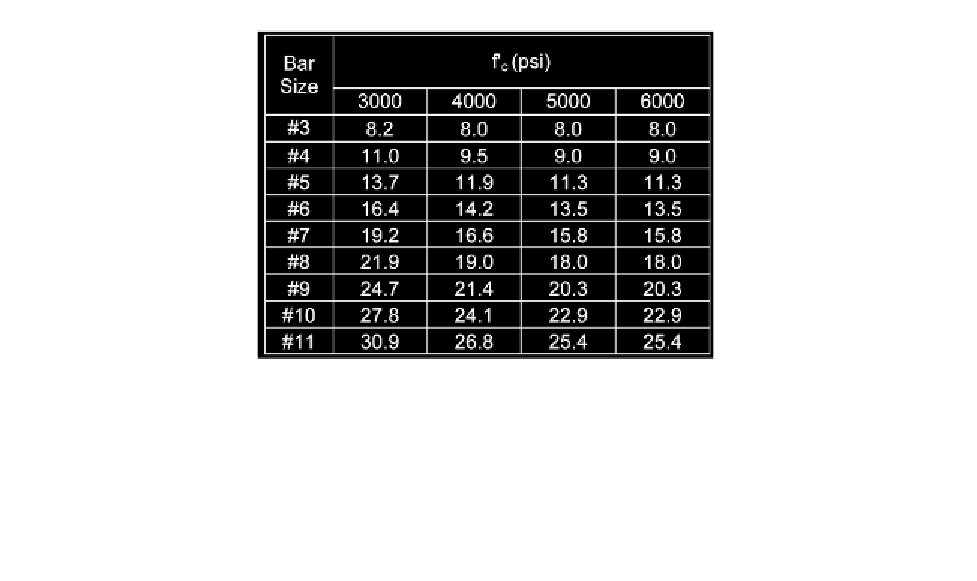Civil Engineering Reference
In-Depth Information
The development lengths give in Table 8-2 are applicable for end hooks with side cover normal to plane of
hook of not less than 2
1
⁄
2
in. and end cover (90° hooks only) of not less than 2 in. For these cases, ˜
dh
= 0.7˜
hb
,
but not less than 8d
b
or 6 in. (ACI 12.5.1). For hooked bar anchorage in beam-column joints, the hooked beam
bars are usually placed inside the vertical column bars, with side cover greater than the 2
1
⁄
2
-in. minimum
required for application of the 0.7 reduction factor. Also, for 90° end hooks with hook extension located inside
the column ties, the 2-in. minimum end cover will usually be satisfied to permit the 0.7 reduction factor.
Where development for full f
y
is not specifically required, the tabulated values of ˜
dh
in Table 8-2 may be
further reduced for excess reinforcement (ACI 12.5.3.d). As noted above, ˜
dh
must not be less than 8d
b
or 6 in.
ACI 12.5.4 provides additional requirements for hooked bars terminating at the discontinuous end of members
(ends of simply supported beams, free end of cantilevers, and ends of members framing into a joint where the
member does not extend beyond the joint). If the full strength of the hooked bar must be developed, and if both
the side cover and the top (or bottom) cover over the hook is less than 2
1
⁄
2
in., closed ties ore stirrups spaced at
3d
b
maximum are required along the full development length ˜
dh
. The reduction factor in ACI 12.5.3.b must not
be used in this case. At discontinuous ends of slabs with confinement provided by the slab continuous on both
sides normal to the plane of the hook, the requirements in ACI 12.5.4 for confining ties or stirrups do not apply.
8.4.4
Development of Bars in Compression
Shorter development lengths are required for bars in compression than in tension since the weakening effect
of flexural tension cracks in the
co
ncrete is not present. The development length for deformed bars in
compression is , but not less than 0.0003d
b
f
y
or 8 in. (ACI 12.3). For concrete with
› = 4000 psi and grade 60 reinforcement bars ˜
dc
= 19d
b
. The minimum development for bars in compression
is 8 in. Table 8-3 lists the development length in compression for grade 60 bars and concrete strengths ranging
from 3000 to 6000 psi. The values may be reduced by the applicable factors in ACI 12.3.3.
dc
=
0.02d
b
f
y
/
f
c
ʹ
Table 8-3 Minimum Compression Development Length
˜
dc
for Grade 60 Bars (in.)
8.5
SPLICES OF REINFORCING BARS
Three methods are used for splicing reinforcing bars: 1) lap splices, 2) welded splices, and 3) mechanical
connections. The lap splice is usually the most economical splice. When lap splices cause congestion or


Search WWH ::

Custom Search